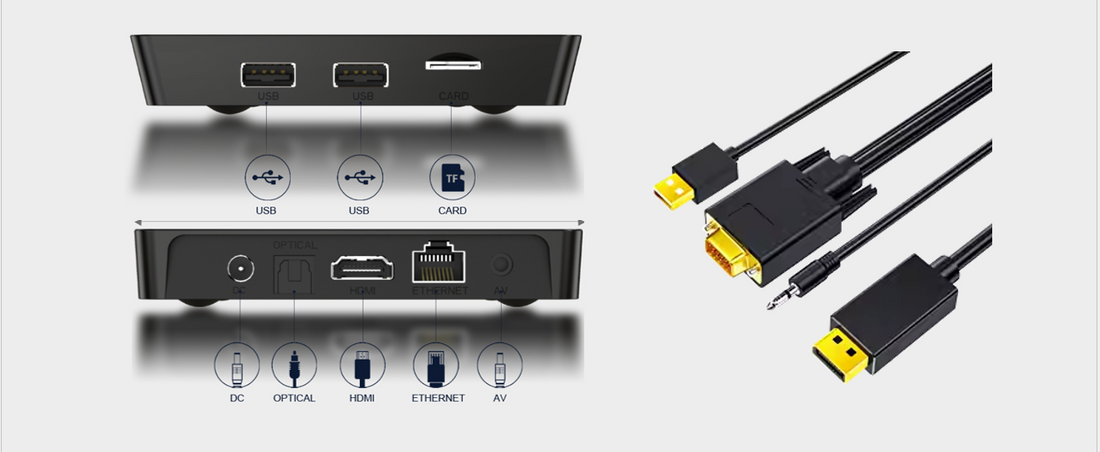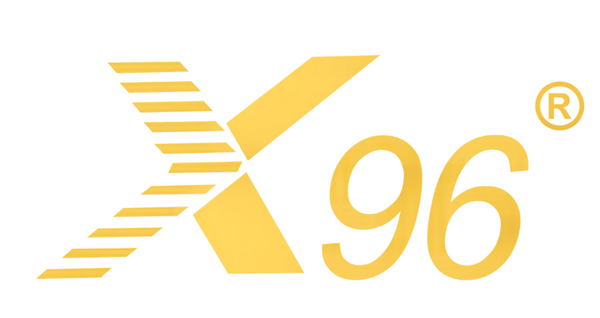
TV Box Audio Output and Format Support: Everything You Need to Know
TV boxes have become increasingly popular in recent years as they provide a convenient way to stream movies, TV shows, and other content on your television. But when it comes to audio output and format support, not all TV boxes are created equal. In this blog post, we'll take a closer look at TV box audio output and format support, and what you need to know to get the best audio experience.
Audio Output Options
Most TV boxes offer a variety of audio output options, including HDMI, SPDIF, and 3.5mm audio jacks. HDMI is the most common audio output option and provides high-quality digital audio. SPDIF is another popular option that provides digital audio output through a coaxial or optical cable. 3.5mm audio jacks are typically used for analog audio output and are less common on TV boxes.
Audio Format Support
TV boxes support a variety of audio formats, including MP3, AAC, AC3, DTS, and more. MP3 is the most commonly used audio format and is supported by almost all TV boxes. AAC is another popular audio format that provides high-quality audio at lower bitrates. AC3 and DTS are surround sound formats that provide a more immersive audio experience.
In addition to these popular audio formats, TV boxes may also support less common formats such as FLAC, OGG, and WAV. The level of support for these less common formats may vary depending on the specific TV box and its hardware.
Audio Output Format Examples
Different TV box chipsets may support different audio output formats. Here are some examples:
- Amlogic S905X3: This chipset supports HDMI 2.1 output with support for up to 8K resolution, as well as SPDIF and RCA audio output. It supports a wide range of audio formats including MP3, AAC, AC3, DTS, FLAC, and more.
- Rockchip RK3318: This chipset supports HDMI 2.0 output with support for up to 4K resolution, as well as SPDIF and RCA audio output. It supports a range of audio formats including MP3, AAC, AC3, DTS, and more.
- Allwinner H616: This chipset supports HDMI 2.0 output with support for up to 6K resolution, as well as SPDIF and RCA audio output. It supports a range of audio formats including MP3, AAC, AC3, DTS, and more.
- Allwinner H728: This chipset supports HDMI 2.1 output with support for up to 4K resolution, as well as SPDIF and I2S audio output. It supports a range of audio formats including MP3, AAC, AC3, DTS, FLAC, and more.
-Amlogic S928X-J: This chipset supports HDMI 2.1 output with support for up to 8K resolution, as well as SPDIF and I2S audio output. It supports a range of audio formats including MP3, AAC, AC3, DTS, FLAC, and more.
Audio Quality
The audio quality of a TV box depends on a variety of factors, including the audio output options, the audio format support, and the quality of the audio components in the TV box. Higher-end TV boxes typically offer better audio quality, but this can vary depending on the specific model.
To get the best audio quality from your TV box, it's important to use high-quality audio components, such as a high-quality soundbar or speakers. You should also make sure that the TV box is connected to your audio components using the best possible connection, such as HDMI or SPDIF.
Conclusion
TV box audio output and format support are important factors to consider when choosing a TV box. Make sure that the TV box you choose supports the audio formats that you need and offers the audio output options that you want. To get the best audio quality, use high-quality audio components and connect your TV box to your audio components using the best possible connection. With the right TV box and audio setup, you can enjoy high-quality audio with all of your favorite movies, TV shows, and other content.
Audio Output Options
Most TV boxes offer a variety of audio output options, including HDMI, SPDIF, and 3.5mm audio jacks. HDMI is the most common audio output option and provides high-quality digital audio. SPDIF is another popular option that provides digital audio output through a coaxial or optical cable. 3.5mm audio jacks are typically used for analog audio output and are less common on TV boxes.
Audio Format Support
TV boxes support a variety of audio formats, including MP3, AAC, AC3, DTS, and more. MP3 is the most commonly used audio format and is supported by almost all TV boxes. AAC is another popular audio format that provides high-quality audio at lower bitrates. AC3 and DTS are surround sound formats that provide a more immersive audio experience.
In addition to these popular audio formats, TV boxes may also support less common formats such as FLAC, OGG, and WAV. The level of support for these less common formats may vary depending on the specific TV box and its hardware.
Audio Output Format Examples
Different TV box chipsets may support different audio output formats. Here are some examples:
- Amlogic S905X3: This chipset supports HDMI 2.1 output with support for up to 8K resolution, as well as SPDIF and RCA audio output. It supports a wide range of audio formats including MP3, AAC, AC3, DTS, FLAC, and more.
- Rockchip RK3318: This chipset supports HDMI 2.0 output with support for up to 4K resolution, as well as SPDIF and RCA audio output. It supports a range of audio formats including MP3, AAC, AC3, DTS, and more.
- Allwinner H616: This chipset supports HDMI 2.0 output with support for up to 6K resolution, as well as SPDIF and RCA audio output. It supports a range of audio formats including MP3, AAC, AC3, DTS, and more.
- Allwinner H728: This chipset supports HDMI 2.1 output with support for up to 4K resolution, as well as SPDIF and I2S audio output. It supports a range of audio formats including MP3, AAC, AC3, DTS, FLAC, and more.
-Amlogic S928X-J: This chipset supports HDMI 2.1 output with support for up to 8K resolution, as well as SPDIF and I2S audio output. It supports a range of audio formats including MP3, AAC, AC3, DTS, FLAC, and more.
Audio Quality
The audio quality of a TV box depends on a variety of factors, including the audio output options, the audio format support, and the quality of the audio components in the TV box. Higher-end TV boxes typically offer better audio quality, but this can vary depending on the specific model.
To get the best audio quality from your TV box, it's important to use high-quality audio components, such as a high-quality soundbar or speakers. You should also make sure that the TV box is connected to your audio components using the best possible connection, such as HDMI or SPDIF.
Conclusion
TV box audio output and format support are important factors to consider when choosing a TV box. Make sure that the TV box you choose supports the audio formats that you need and offers the audio output options that you want. To get the best audio quality, use high-quality audio components and connect your TV box to your audio components using the best possible connection. With the right TV box and audio setup, you can enjoy high-quality audio with all of your favorite movies, TV shows, and other content.




